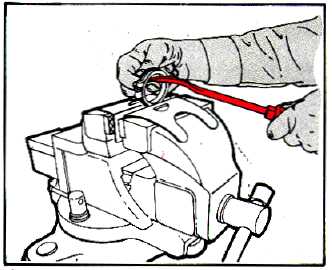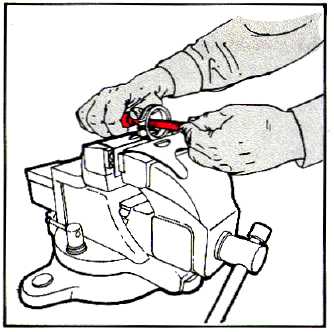TM 9-243
SAFETY
1.
Keep work, scraper, and hands free from grease
and oil when using a scraper.
2.
Keep scrapers sharp at all times, (except the carbon
scrapers), since a dull scraper is more apt to slip
and cause injury.
3.
Use the scrapers only for their intended purposes.
NOTE
Carbon scraper blades are fairly dull
to prevent scoring of a piston and/or
cylinder wall.
USING A BEARING SCRAPER
1
Place the bearing to be scraped on a bench or other
suitable working surface.
2
Use both hands on the bearing scraper. One hand
should be at the end of the handle while the other
hand steadies the tool.
3
Use the hand at the end of the handle to twist the
tool. Use very light pressure and remove a small
amount of metal with the twisting stroke. If too
much pressure is applied, the scraper will chatter
and leave a rough, uneven surface.
4
Start at one top side of bearing cap. Work down,
and then up to the top of the other side. Do not
scrape lengthwise.
5
Repeat procedure until the required amount of
material has been removed to fit the bearing onto
the shaft.
CARE OF SCRAPERS
1.
Keep scrapers sharp (except carbon scrapers) by
sharpening or grinding.
NOTE
Carbon scraper blades are fairly dull
to prevent scoring of a piston and/or
cylinder wall.
2.
When a scraper is not in use, coat the blade with a
film of light oil.
3.
Hang or store scrapers separately to protect the
cutting edge. Do not throw scrapers in with other
tools. This will damage the cutting edges.
4.
For long-term storage, coat all metal parts with rust-
preventive compound and store in a dry place.
30-3/(30-4 blank)



